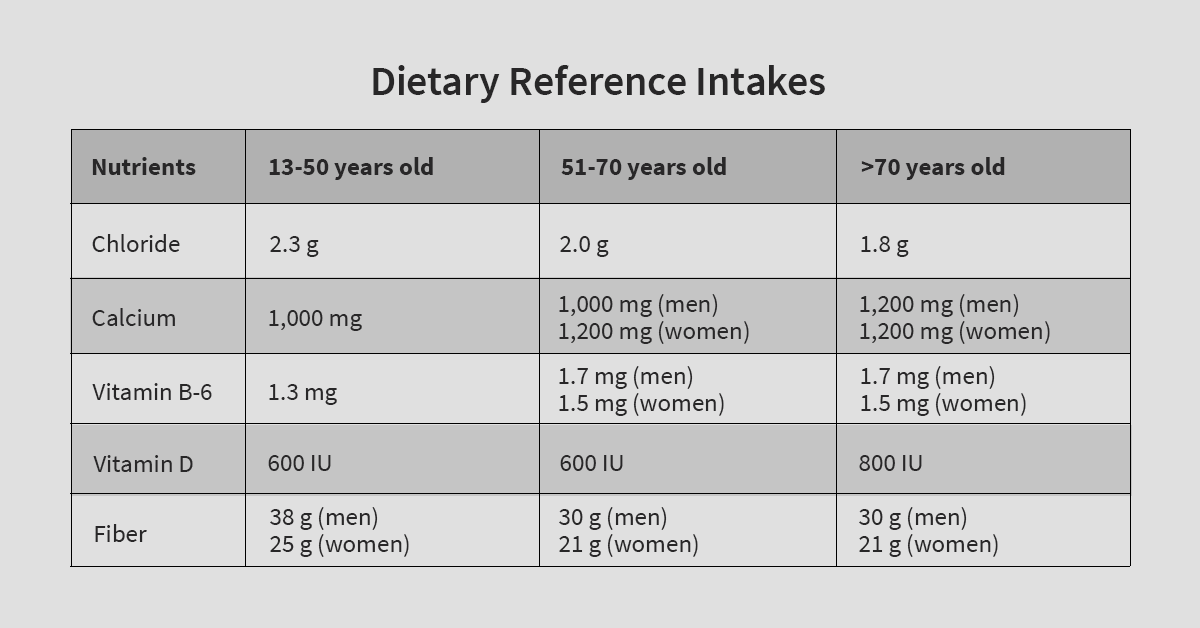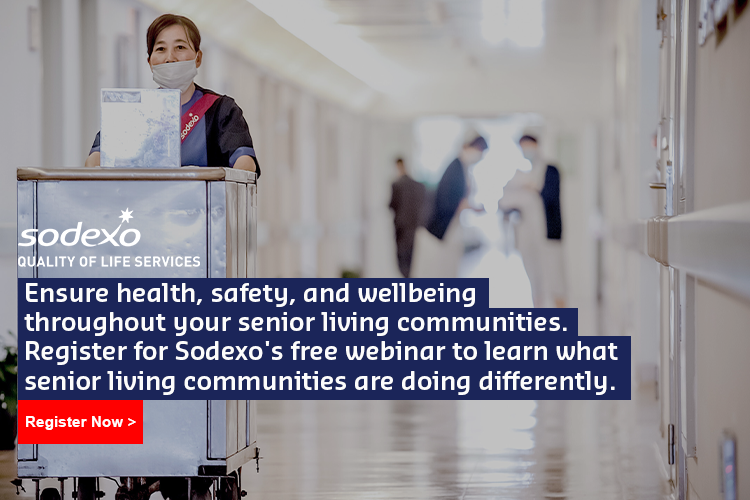By Katie Dodd
Nutrition needs are different for everyone. Individual needs can vary by age, gender, stage of life, or even medical condition. Older adults have unique nutrition needs. Here, we’ll dig deep into the Dietary Reference Intakes and the difference in nutrition needs between adults and older adults.

Dietary Reference Intakes
The Institute of Medicine has defined the nutrition needs of different populations using Dietary Reference Intakes (DRIs). DRIs are the amounts of a specific nutrient that a healthy person needs based on their age and gender.
Join our community as we rebuild the new standard for senior living. Watch our free webinar now.
TABLE 1 DRIs that change with advancing age
Here is a summary of DRIs that are unique to older adults:
- Chloride: lower needs
- Calcium: greater needs
- Vitamin B6: greater needs
- Vitamin D: greater needs
- Fiber: lower needs
Next, let’s look at these nutrients in more detail.
Minerals
Chloride and calcium are both minerals we need for optimal health.
Chloride
Sodium chloride is the name we use for table salt and is often found together with sodium in our foods. Adults 50 years old or younger need 2.3 g of chloride per day. However, as a person ages, their need for chloride decreases.
Chloride plays an important role in maintaining a balance of fluids in the body. Reducing sodium chloride can aid in lowering blood pressure and improving heart health. The best way to decrease intake of chloride is to read nutrition facts, limit processed foods and eating out (these foods often contain high amounts of sodium chloride!), and eat more whole foods that naturally contain less chloride.
Calcium
Calcium plays a vital role in bone health, which is important since older adults are more likely to have reduced bone mass and osteoporosis. They are also at a higher risk for bone fractures.
The need for calcium increases with age and the best way to increase intake is to read a food’s nutrition facts label and eat more dairy products, calcium-fortified beverages and foods, and vegetables higher in calcium. Edamame, kale, broccoli, and turnip greens are some examples of vegetables that contain calcium.

Dietary Reference Intakes - Accessible Version

Vitamins
Vitamins D and B6 are both vitamins that have a higher DRI in persons of advancing age. It’s important to note that although the DRI for vitamin B12 remains unchanged, older adults may actually need more of this nutrient. This is because older adults absorb less vitamin B12 than younger adults. Older adults should get vitamin B12 through both natural food and fortified food sources.
Vitamin B6
Found in a wide variety of foods—from chicken, salmon, and garbanzo beans to spinach, bananas, and cottage cheese—this nutrient is one of the easiest to incorporate into most diets.
Vitamin B-6 has an important role in overall health, metabolism, immunity, and enzyme reactions in the body. Deficiency can negatively impact immunity, cause anemia, and lead to physical symptoms such as a swollen tongue or cracks in the lips. The need for vitamin B6 increases with age.
Vitamin D
Vitamin D works with calcium to help keep bones healthy. This vitamin is also known as the “sunshine vitamin” as the body can create vitamin D when skin is exposed to the sun. Older adults need more vitamin D and many are deficient and may require supplementation in addition to consuming foods containing high vitamin D.
The best way to get adequate vitamin D is to increase exposure to the sun at safe levels, and increase intake of foods high in this vitamin (salmon, eggs, fortified dairy, etc.) alongside speaking with a medical provider about the potential need for supplementation.

Fiber
Fiber is a type of carbohydrate that the body does not digest and is essential for preventing constipation and plays an important role in reducing the risk of heart disease and diabetes.
The DRI for fiber decreases with advancing age, but it’s important to note that most people do not eat enough fiber to begin with.
The best way to get adequate fiber is to read the nutrition facts label and eat plenty of fruits, vegetables, beans, legumes, nuts, and whole grains.
Conclusion
All nutrients are needed for a healthy diet. However, as we get older, our nutrition needs change: older adults need more vitamin D, calcium, and vitamin B6, and they need less chloride and fiber. Ensuring the unique nutrition needs of older adults are met is important for maintaining optimal health with advancing age.
Ensure health, safety, and wellbeing throughout your senior living communities. Register for Sodexo's free webinar to learn what senior living communities are doing differently.
References
- “Nutrient Recommendations: Dietary Reference Intakes (DRI),” National Institutes of Health, accessed June 16, 2020.https://ods.od.nih.gov/Health_Information/Dietary_Reference_Intakes.aspx
- Dahl WJ, Stewart ML. Position of the Academy of Nutrition and Dietetics: Health Implications of Dietary Fiber. Journal of the Academy of Nutrition and Dietetics. 2015;115(11):1861-70.
September 18, 2020




.jpg)